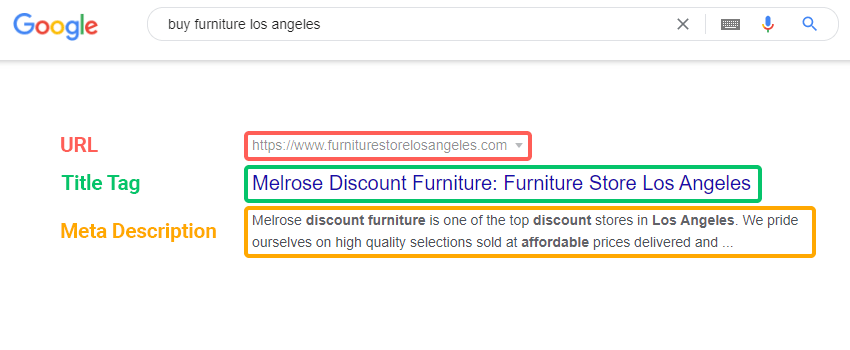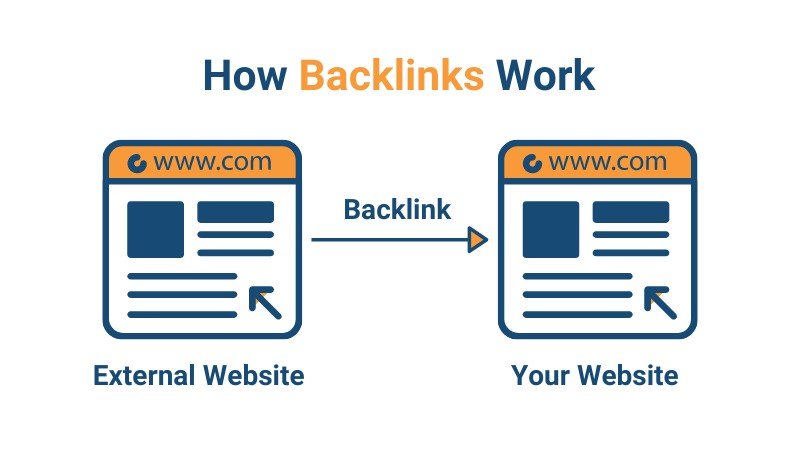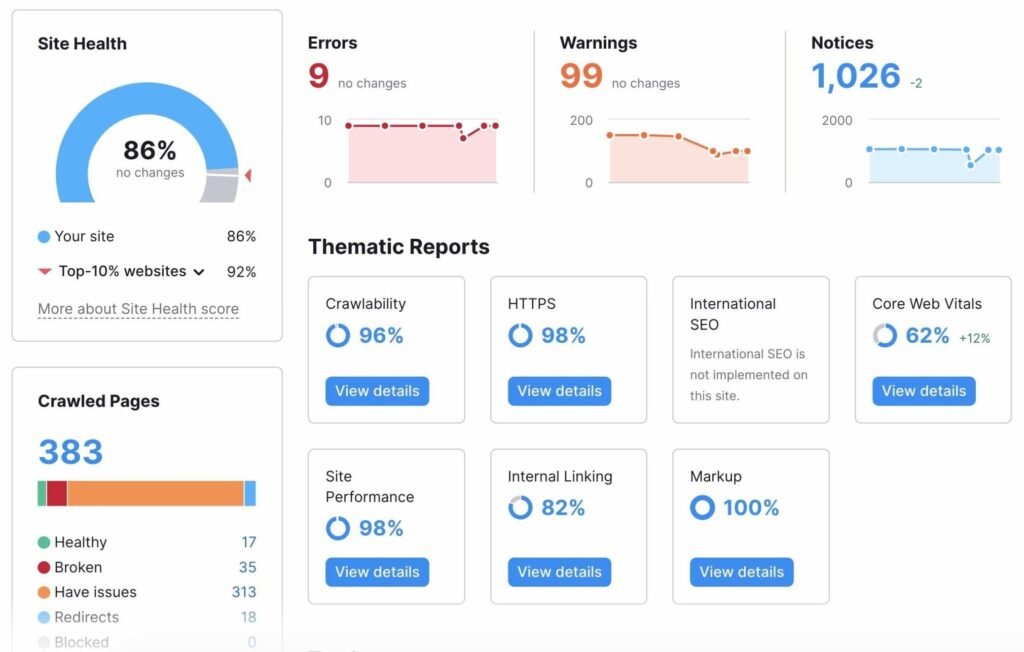I. Introduction

In the ever-changing landscape of digital marketing, Search Engine Optimization (SEO) is a must-have for businesses looking to grow their online presence and drive organic traffic to their websites. Understanding and implementing effective SEO strategies can have a significant impact on a company’s growth trajectory. In this introductory section, we will discuss the importance of SEO in the digital realm and provide an overview of key strategies for promoting business growth.
A. Importance of SEO in Digital Marketing
In today’s digital age, where consumers rely heavily on search engines like Google, Bing, and Yahoo to find products, services, and information, the importance of SEO cannot be overstated. SEO serves as a compass, directing potential customers to your digital doorstep by ensuring that your website ranks high in search engine results pages (SERPS). It is not enough to simply be visible; you must also be visible to the right audience at the right time.
Investing in SEO allows businesses to:
- Enhance Visibility: Appearing on the first page of search results increases your chances of getting clicks and organic traffic to your website.
- Build Credibility and Trust: Users perceive a highly ranked website to be more credible and trustworthy, resulting in increased brand affinity and customer loyalty.
- Gain Competitive Advantage: In a crowded digital marketplace, outranking competitors in search results can mean a significant increase in market share and revenue.
- Maximize ROI: Compared to traditional marketing channels, SEO provides a higher return on investment (ROI) because it targets users who are actively looking for products or services related to your business. Want to learn more about maximizing ROI visit our blog on 10 Pro Tips to Maximise ROI on Your Google Ad Spend
B. Overview of Key Strategies for Business Growth
While the concept of SEO may appear simple, achieving long-term growth necessitates a strategic approach involving a variety of tactics and techniques. Some important strategies for leveraging the power of SEO for business growth include:
- Content Optimization: To attract and engage your audience, create high-quality, relevant content that is optimized for your target keywords.
- Technical SEO: Optimizing website structure, speed, and performance to ensure a consistent user experience and search engine crawlability.
- Link Building: Acquiring high-quality backlinks from reputable websites to boost domain authority and search engine rankings.
- Mobile Optimization: Ensure that your website is mobile-friendly to cater to the growing number of users who access the internet through mobile devices.
- Analytics and Tracking: Using analytics tools to track website traffic, user behavior, and key performance indicators (KPIs) in order to make data-driven decisions and improve SEO strategies.
Businesses that incorporate these strategies into their digital marketing frameworks can realize the full potential of SEO and accelerate their growth journey in the competitive online landscape.
II. Understanding the Power of Keywords

Keywords are the foundation of SEO, acting as a link between what users are looking for and the content your website offers. In this section, we’ll look at the importance of keywords in SEO, how to conduct keyword research, and the value of leveraging long-tail keywords and understanding user intent.
A. Definition and Importance of Keywords in SEO
Keywords are the words or phrases that people enter into search engines when looking for information, products, or services. They play an important role in determining the relevance of your content to search queries, which ultimately affects your website’s visibility in search results.
The importance of keywords in SEO can be understood through the following points:
- Relevance: By focusing on relevant keywords related to your business, you can ensure that your content meets the interests and needs of your target audience.
- Visibility: Optimizing your website for specific keywords increases its chances of appearing in search results when users search for them.
- Traffic Generation: Ranking for high-volume keywords can result in significant organic traffic to your website, increasing your chances of attracting new customers.
B. Conducting Keyword Research

Keyword research is the process of determining which words and phrases users are searching for in relation to your business. It entails understanding search volume, competition, and user intent in order to prioritize the most valuable keywords for SEO purposes.
Effective keyword research entails the following steps:
- Identifying Seed Keywords: Begin by creating a list of broad keywords related to your business or industry.
- Expanding Keyword List: Use keyword research tools like Google Keyword Planner, SEMrush, or Ahrefs to find related keywords, analyze search volume, and evaluate competition.
- Analyzing User Intent: Consider the intent of each keyword (e.g., informational, navigational, transactional) to ensure your content matches what users are looking for.
C. Leveraging Long-Tail Keywords and User Intent
Long-tail keywords are longer, more specific phrases that tend to have lower search volume but higher conversion rates. While short-tail keywords are more generic and competitive, long-tail keywords enable you to reach a more specific audience and capture users at various stages of the buyer’s journey.
Understanding user intent is critical when optimizing content for relevant keywords. By aligning your content with the intent behind search queries (for example, providing information, solving a problem, or making a purchase), you can create more valuable and engaging content that resonates with your intended audience.
III. Optimizing On-Page Elements

On-page optimization entails optimizing various elements of your website to increase its visibility and relevance to search engines. In this section, we’ll go over the importance of on-page optimization, key on-page elements, and strategies for creating compelling, keyword-rich content.
A. Importance of On-Page Optimization
On-page optimization is critical for signaling the relevance and value of your content to search engines. By optimizing on-page elements, you can improve your website’s visibility, user experience, and, ultimately, organic traffic.
Key aspects of on-page optimization include:
- Relevance: Making sure your content is relevant to the keywords you’re targeting helps search engines understand what your page is about and how valuable it could be to users.
- User Experience: Optimizing on-page elements like page speed, mobile responsiveness, and navigational structure improves the user experience, resulting in increased engagement and lower bounce rates.
- Crawlability: Structure your website so that search engine crawlers can easily navigate and understand it, and all relevant pages will be indexed and included in search results.
B. Key On-Page Elements
Several on-page elements have a direct impact on your site’s visibility and performance in search results. Understanding and optimizing these elements can significantly improve your SEO efforts.
Some key on-page elements include:

- Title Tags: The title tag is an HTML element that specifies the title of a webpage. It appears as a clickable headline in search engine results and should accurately describe the page’s content while using target keywords.
- Meta Descriptions: Meta descriptions are brief summaries of the content on a webpage. While not directly affecting ranking, well-written meta descriptions can increase click-through rates by enticing users to click on your link in search results.
- Headings (H1, H2, etc.): Headings help structure your content and make it easier for users and search engines to understand the order and flow of information on a page. Incorporating target keywords in headings can help to reinforce the relevance of your content.
- URLs: Optimizing URLs by including relevant keywords while remaining concise and descriptive can improve both user experience and search engine ranking.
C. Crafting Compelling, Keyword-Rich Content
On-page optimization is fundamentally based on content. Creating high-quality, keyword-rich content that meets the needs and expectations of your target audience is critical for increasing organic traffic and user engagement.
Effective content optimization strategies include:
- Keyword Placement: Target keywords should be used naturally throughout your content, including headings, paragraphs, and meta tags, to signal relevance to search engines.
- Content Structure: To improve readability and user experience, divide your content into clearly defined sections with descriptive headings.
- Value and Relevance: Ensure that your content provides useful information or solves a problem for your target audience, in accordance with their search intent.
Businesses can improve their search engine visibility, attract organic traffic, and ultimately drive growth and success in the digital landscape by optimizing on-page elements and creating compelling, keyword-rich content.
IV. Harnessing the Power of Quality Backlinks

Backlinks, also known as inbound links, are links from other websites that lead users to your website. In this section, we’ll look at the role of backlinks in off-page SEO, strategies for building a diverse portfolio of high-quality backlinks, and the value of strategic link-building initiatives.
A. Significance of Backlinks in Off-Page SEO
Backlinks are an important off-page SEO factor that search engines use to determine the authority, credibility, and relevance of a website.
Here’s why backlinks matter:
- Authority and Trust: Search engines perceive websites with a large number of quality backlinks to be more authoritative and trustworthy, resulting in higher rankings in search results.
- Referral Traffic: Backlinks not only help with SEO, but they also drive referral traffic from other websites, which can expose your content to new audiences.
- Crawlability and Indexation: Backlinks serve as pathways for search engine crawlers to discover and index new pages on your website, thereby improving overall crawlability and indexation.
B. Cultivating a Diverse Portfolio of High-Quality Backlinks
While the quantity of backlinks is important, quality reigns supreme in the world of backlinking.

Here are strategies for acquiring high-quality backlinks:
- Content Creation and Promotion: Create valuable, shareable content that will naturally generate backlinks from other websites. To increase visibility and the likelihood of receiving backlinks, promote your content through outreach, social media, and partnerships.
- Guest Blogging: Create high-quality guest posts for reputable websites in your industry. Guest blogging allows you to showcase your expertise, reach a new audience, and build valuable backlinks to your website.
- Broken Link Building: Identify broken links on other websites in your niche and offer to replace them with relevant, high-quality content from your own site. This mutually beneficial strategy allows you to earn backlinks while helping website owners fix broken links.
- Relationship Building: Create genuine relationships with influencers, bloggers, and industry experts in your niche. Building rapport can lead to organic backlink opportunities because others will naturally reference and link to your content.
C. Strategic Link-Building Initiatives
A successful link-building strategy requires careful planning and execution. Here are some key initiatives to consider:
- Anchor Text Optimization: When acquiring backlinks, use descriptive and relevant anchor text to provide search engines with context for the linked page’s content.
- Diversification of Link Sources: Aim for a diverse portfolio of backlinks from various sources, such as blogs, forums, news sites, and social media platforms, to boost your website’s overall authority and credibility.
- Continuous Monitoring and Evaluation: Monitor your backlink profile on a regular basis with tools such as Google Search Console or Ahrefs to identify new backlink opportunities, eliminate spammy links, and ensure the health of your link profile.
Businesses can improve their online presence, search engine rankings, and organic traffic by leveraging the power of quality backlinks through strategic link-building initiatives.
V. Prioritizing Mobile Optimization

In an era where mobile devices have become ubiquitous, prioritizing mobile optimization is critical for maintaining a competitive advantage in the digital landscape. This section delves into the significance of mobile optimization in SEO, factors for mobile optimization, and the impact of mobile-friendliness on search engine rankings.
A. Importance of Mobile Optimization in SEO
With the majority of internet users accessing the web via mobile devices, search engines have changed their algorithms to prioritize mobile-friendly websites.
Here’s why mobile optimization is crucial for SEO:
- User Experience: Mobile optimization ensures that users have a smooth and enjoyable experience when visiting your website via smartphones or tablets. A positive user experience increases engagement and reduces bounce rates, indicating to search engines that your website is valuable and relevant.
- Search Engine Preference: Search engines, such as Google, prioritize mobile-friendly websites in their search results, particularly for users searching on mobile devices. Failure to optimize for mobile can lead to lower visibility and rankings in mobile search results.
- Page Speed: Mobile optimization frequently includes improving page speed, which is an important ranking factor for both desktop and mobile searches. Faster-loading mobile pages not only improve the user experience, but also help to boost search engine rankings.
B. Factors for Mobile Optimization
Achieving mobile optimization entails addressing a variety of issues to ensure that your website is user-friendly and performs well on mobile devices.
Key factors for mobile optimization include:
- Page Load Times: Optimize images, minify code, and use browser caching to speed up page load times on mobile devices.
- Navigation: Simplify navigation and make menus and buttons easily clickable and accessible on smaller screens.
- Responsive Design: Use responsive design techniques to create a layout that is flexible and adaptable to different screen sizes and orientations.
- Content Formatting: To improve mobile readability, use larger fonts, shorter paragraphs, and avoid pop-ups or interstitials that may disrupt the user experience.
C. Impact of Mobile-Friendliness on Search Engine Rankings
Google’s mobile-first indexing strategy means that the mobile version of your website is the primary foundation for how Google indexes and ranks your pages. As a result, mobile-friendliness has a direct impact on your search engine rankings across both mobile and desktop devices.
Websites that provide a positive mobile experience are more likely to rank higher in mobile search results, whereas those that are not mobile optimized may rank lower and receive less visibility.
To summarize, prioritizing mobile optimization is critical not only for providing a consistent user experience, but also for maintaining and improving search engine rankings. Businesses that optimize for mobile can remain competitive in an increasingly mobile-centric digital landscape while also capitalizing on the growing number of mobile users accessing the web.
VI. Embracing Data-Driven Insights

In the ever-changing world of SEO, embracing data-driven insights is critical for understanding the efficacy of your strategies, tracking performance, and making informed decisions to adapt and refine your approach. This section delves into the use of analytics tools for SEO tracking, monitoring key metrics and site performance, and performing regular SEO audits to adapt to algorithm changes.
A. Utilizing Analytics Tools for SEO Tracking
Analytics tools provide useful information about website performance, user behavior, and the efficacy of SEO campaigns. Businesses can optimize their SEO strategies by using analytics tools such as Google Analytics, Google Search Console, and third-party platforms such as SEMrush or Moz.
Key metrics to track include:
- Organic Traffic: Track the amount of organic traffic that comes to your website from search engines over time. Analyze trends and fluctuations to identify opportunities for improvement.
- Keyword Rankings: Track the rankings of target keywords in search engine results pages (SERPs) to determine the effectiveness of optimization efforts and identify areas for improvement.
- Click-Through Rate (CTR): Calculate the percentage of users who click on your website’s search results versus the total number of impressions. Meta titles and descriptions can be optimized to increase clickthrough rates.
- Bounce Rate: Determine the percentage of visitors who leave your site after only viewing one page. A high bounce rate could indicate problems with the user experience or content relevance.
B. Monitoring Key Metrics and Site Performance
Continuous monitoring of key metrics and site performance is critical for identifying trends, detecting anomalies, and making data-driven decisions to improve SEO strategies.
Some key areas to focus on include:
- Site Speed:Monitor page load times on both desktop and mobile devices to ensure peak performance. Slow-loading pages can have a negative impact on both the user experience and search engine rankings.
- Mobile Usability: Check for mobile usability issues with tools like Google’s Mobile-Friendly Test, and address any issues that may be impeding mobile optimization.
- Backlink Profile: Monitor your backlink profile on a regular basis to identify new backlinks, remove toxic or spammy links, and keep it healthy.
C. Conducting Regular SEO Audits and Adapting to Algorithm Updates

SEO is a dynamic landscape, with search engine algorithms constantly changing and evolving. Regular SEO audits help businesses identify areas for improvement, resolve technical issues, and stay ahead of algorithm updates.
Key components of an SEO audit include:
- Technical SEO: To ensure optimal performance, evaluate the website’s structure, crawlability, site speed, and other technical aspects.
- Content Analysis: Evaluate the quality, relevance, and optimization of existing content. Identify opportunities for creating new content and optimizing existing pages..
- Backlink Analysis: Evaluate the quality and relevance of backlinks pointing to your website. Avoid toxic or spammy links that could harm your website’s reputation.
By embracing data-driven insights, tracking key metrics, and conducting regular SEO audits, businesses can adapt to changes in the SEO landscape, optimize their strategies, and maintain or improve their search engine rankings over time.
VII. Conclusion
In this comprehensive guide, we’ve covered the fundamentals of SEO and how businesses can use them to unlock digital growth opportunities. Understanding the power of keywords, harnessing quality backlinks, prioritizing mobile optimization, and embracing data-driven insights are all critical components of SEO for driving organic traffic and improving search engine rankings.
A. Recap of Key Insights into SEO Secrets
Throughout this guide, we’ve emphasized the following key insights:
- Importance of Relevance: Ensuring that your content is relevant to user intent and search queries is critical to SEO success.
- Quality Over Quantity: Whether it’s keywords, backlinks, or content, prioritizing quality over quantity is critical for long-term success.
- User Experience Matters: Providing a consistent and enjoyable user experience across desktop and mobile devices is critical for retaining visitors and improving search rankings.
B. Importance of Continuous Adaptation and Refinement
The digital landscape is constantly evolving, with search engine algorithms, user behavior, and market trends all changing. To stay ahead of the competition, businesses must prioritize ongoing adaptation and refinement of their SEO strategies.
- Stay Informed: Keep up with industry news, algorithm updates, and best practices to ensure your strategies remain relevant and effective.
- Monitor Performance: Regularly monitor key metrics, conduct SEO audits, and analyze data to identify areas for improvement and optimization.
- Experiment and Iterate: Don’t be afraid to try new strategies and tactics. Analyze the results, learn from your successes and failures, and iterate accordingly.
C. Final Encouragement for Businesses
Finally, we must recognize SEO’s enormous potential for driving business growth and success in the digital age. Businesses that implement the strategies outlined in this guide and remain committed to continuous learning and adaptation can realize the full potential of SEO and achieve their growth goals.
In the ever-changing landscape of digital marketing, SEO remains a powerful tool for businesses seeking to increase visibility, attract organic traffic, and establish a strong online presence. Understanding SEO secrets and implementing effective strategies can help businesses position themselves for long-term success in the competitive digital marketplace.
FAQs
1. What is SEO, and why is it important?
- Answer: SEO (Search Engine Optimization) is the process of improving a website’s visibility and ranking in search engine results pages (SERPs). It’s important because it helps businesses attract organic traffic, boost brand visibility, and build credibility and trust with their target audience.
2. How long does it take to see results from SEO?
- Answer: The timeframe for seeing SEO results varies depending on a number of factors, including keyword competitiveness, the quality of optimization efforts, and the website’s authority. Overall, noticeable improvements can take several months, but significant results frequently necessitate consistent, long-term investment in SEO efforts.
3. What are the most important factors for SEO success?
- Answer: While many factors contribute to SEO success, some of the most important are high-quality, relevant content, authoritative backlinks from reputable websites, technical crawlability and indexation optimization, mobile friendliness, and a positive user experience.
4. Does social media impact SEO?
- Answer: While social media signals (likes, shares, and comments) do not directly influence search engine rankings, they can have an indirect impact on SEO in a variety of ways. For example, social media can improve brand visibility, drive traffic to your website, and attract potential backlinks from other websites.
5. How often should I update my SEO strategy?
- Answer: SEO is a continuous process that requires regular monitoring, evaluation, and adaptation to maintain effectiveness. It is recommended that you review and update your SEO strategy on a regular basis, particularly in response to algorithm updates, changes in user behavior, and shifts in your company’s goals or the industry landscape.
Learn More :
To enhance your knowledge consider attending our Digital Marketing Introduction Sessions. Register for the workshop now by clicking on the link below.
https://coachsudhanshujain.com/contact/
